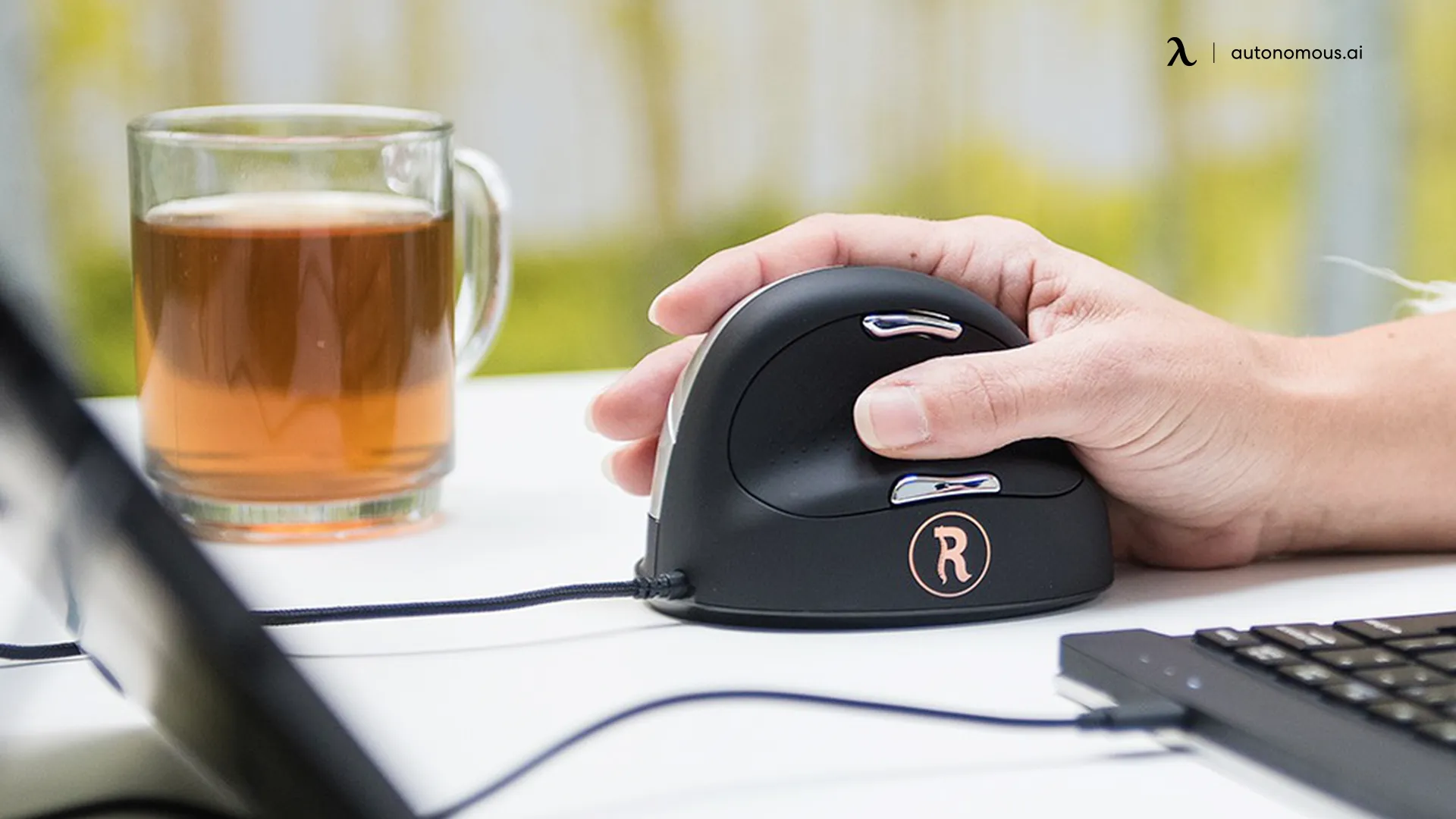
Are your thumbs feeling sore? Overworking your hands in non-ergonomic positions can cause thumb pain and it can really make things harder. Fortunately, there are lots of ergonomic solutions for thumb pain you can try today that will help you work comfortably for maximum productivity.
Thumb pain is an ergonomic injury you can easily find in any workplace. Fortunately, with the right ergonomic solution for thumb pain, you can overcome this problem.
Ergonomic Mouse for Thumb Pain
The first step to easing thumb pain associated with heavy mouse use is switching to pointing devices that require less thumb use, or those that need a set of different thumb muscles to operate compared to traditional mice.
1. Vertical Mouse
If you suffer from either thumb or wrist pain, a vertical mouse is a crucial mouse form factor to consider. The design of a vertical mouse keeps your wrist in a neutral position, which reduces forearm probation. Also, this mouse requires less thumb extension. Together these benefits spell thumb and wrist relief.
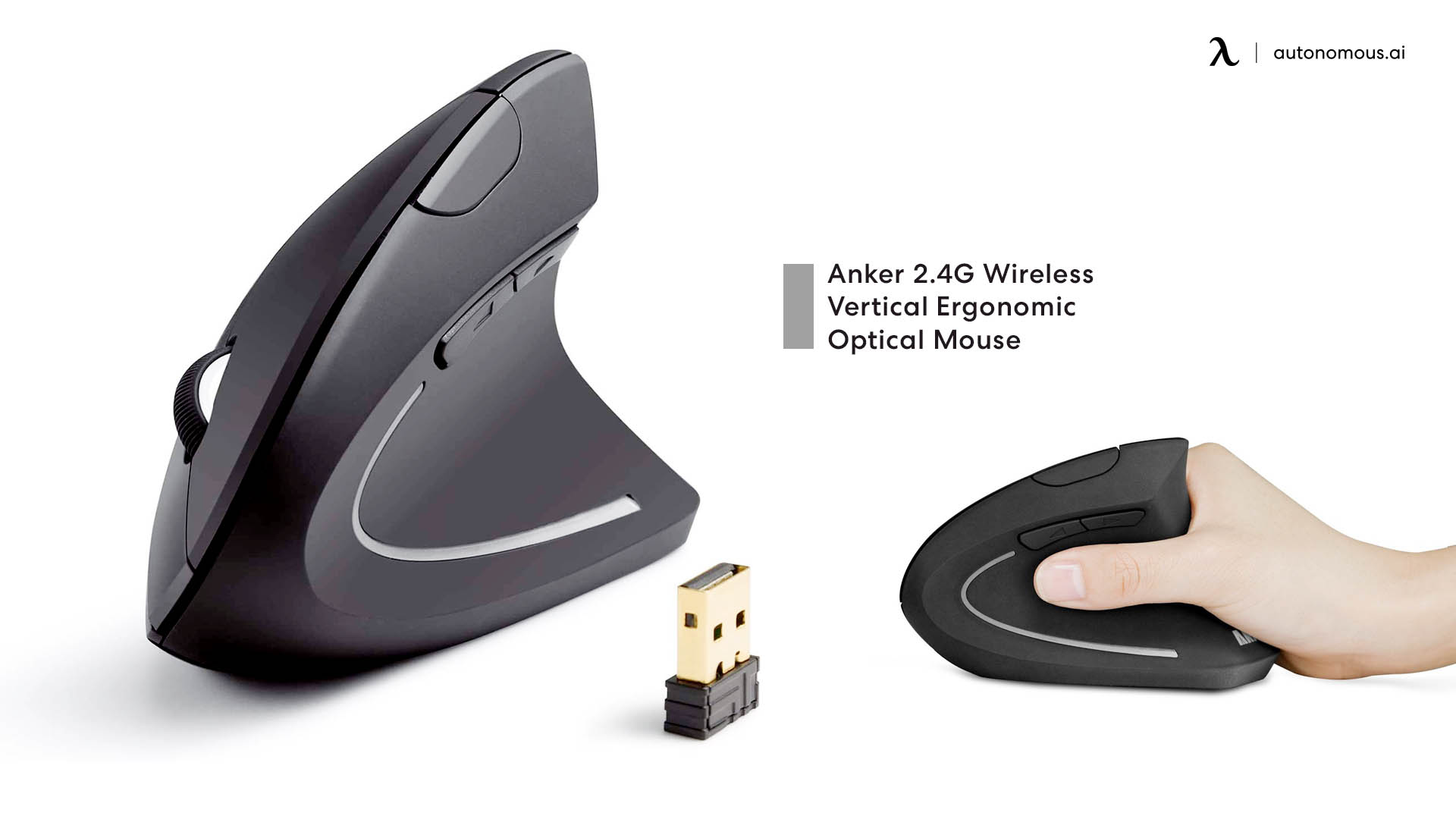
If you want to try a vertical mouse, the Anker 2.4G Wireless Vertical Ergonomic Optical Mouse is a great option. This mouse features an ergonomic design that encourages you to maintain a healthy natural “handshake” arm and wrist positions for smoother movement, causing less strain. Also, the mouse sports previous buttons, which offer convenience when browsing across the web. This is perfect for internet surfers, gamers, and people who work for extended periods with a computer.
2. Trackball Mouse
There are two types of trackball mice available in the market – fingers, and thumb-operated trackball mice. Finger operated trackballs are the superior option because they allow you to use different fingers, and trackballeven your palm to operate.
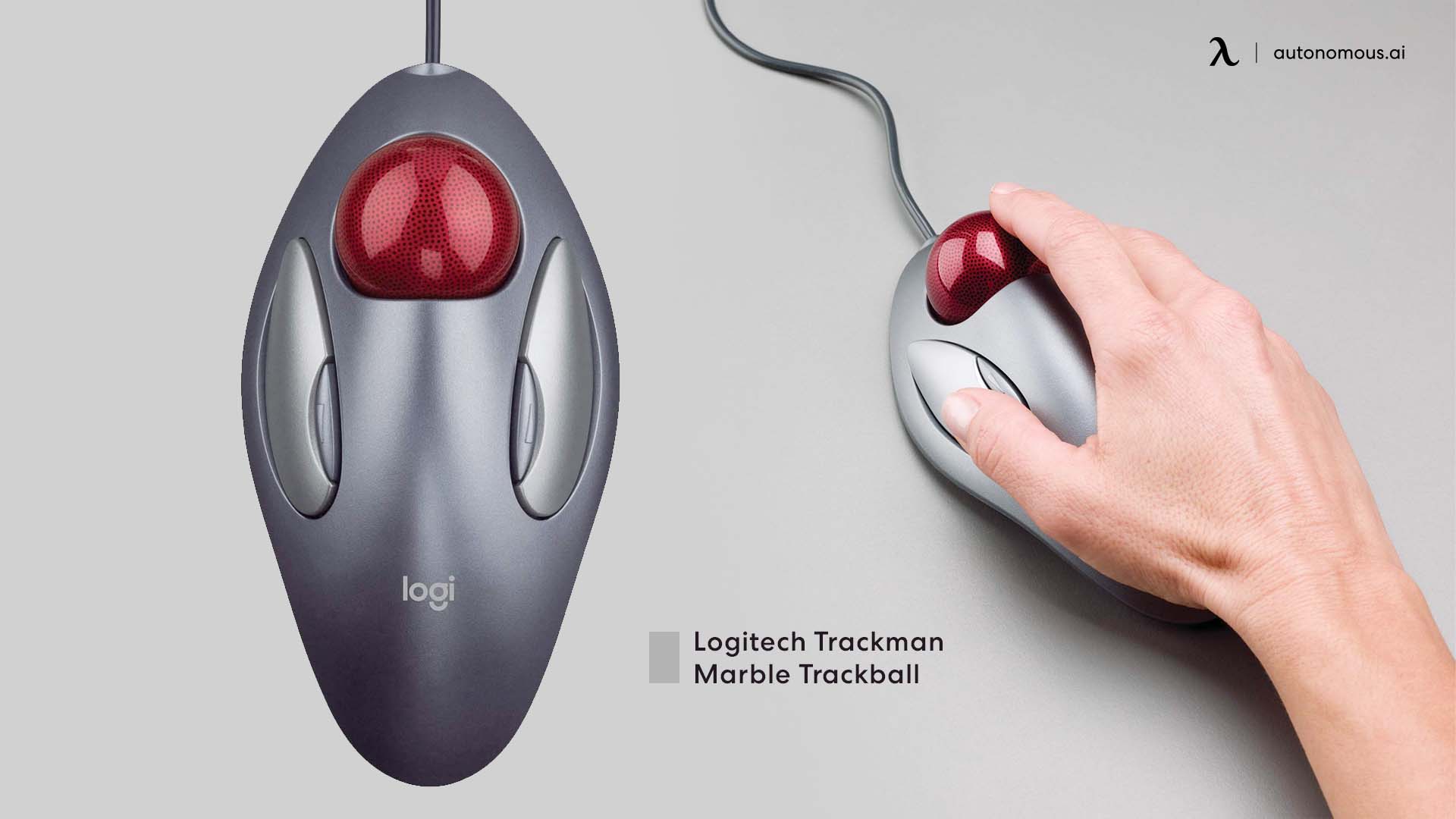
The Logitech Trackman Marble Trackball is a fantastic choice if you’re looking to try a trackball mouse. This mouse features a sculpted ambidextrous shape, which supports your left or right hand and stays in one place. With this trackball mouse, you can move the cursor without moving your arm.
3. Handshoe Mouse
If you aren’t ready to abandon the traditional mouse yet, you should consider the Handshoe mouse. The mouse features a contouring shape, which provides a dedicated cradle to support your thumbs always as your hand rests on it. This mouse requires less gripping, allowing your thumbs to relax more.
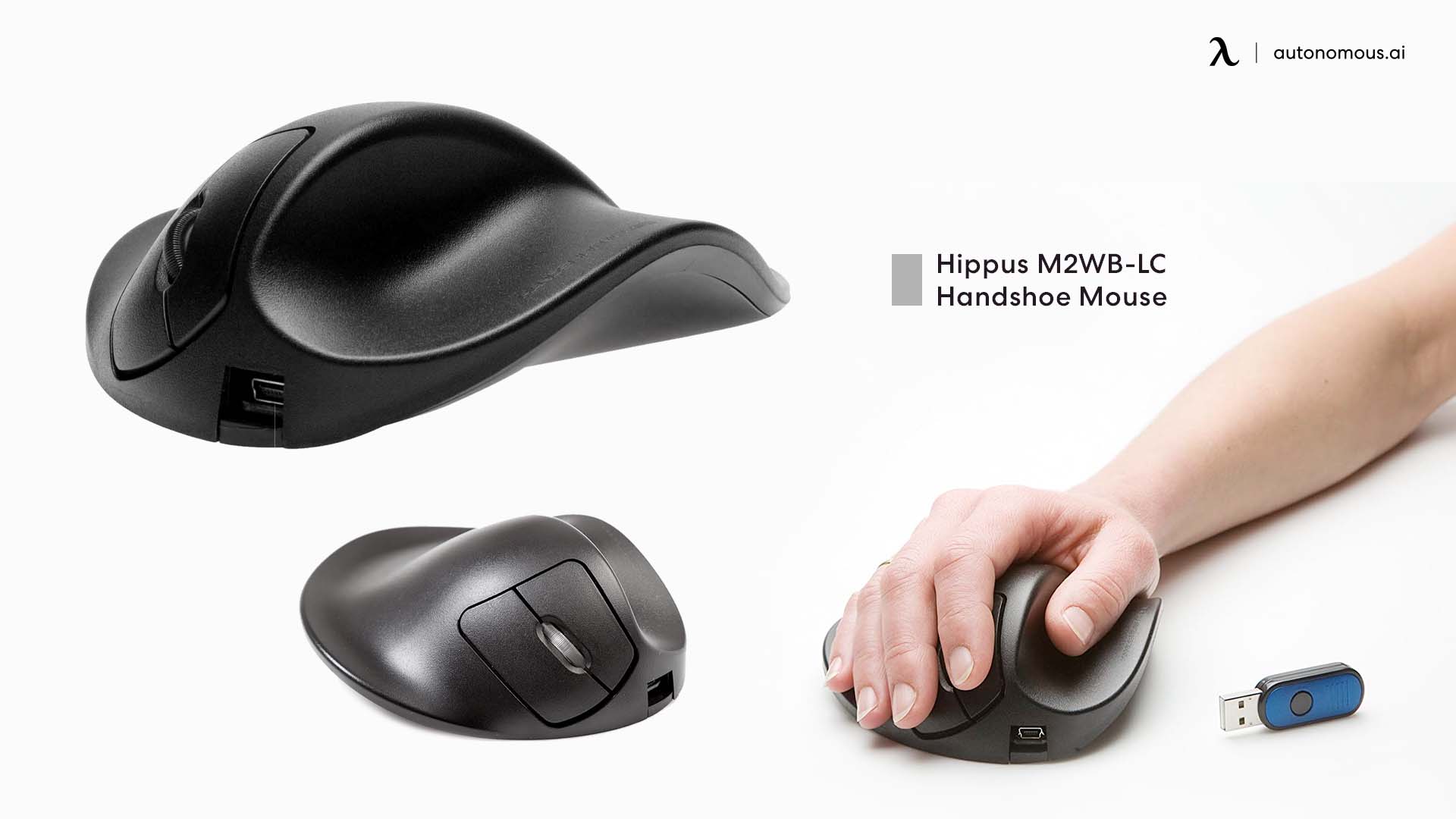
The Hippus M2WB-LC Handshoe Mouse is a brilliant option if you’re looking to try the Handshoe mouse. The Handshoe mouse is designed with curvature and contour to offer optimal support to your fingers, thumb, palm, and wrist while you type.
4. Touchpad
If you suffer from thumb pain, you can also give a touchpad a try. The gesture-driven motions save your hand from gripping the mouse. Also, with a touchpad, you can opt not to use your thumb at all, which makes your thumbs relax.
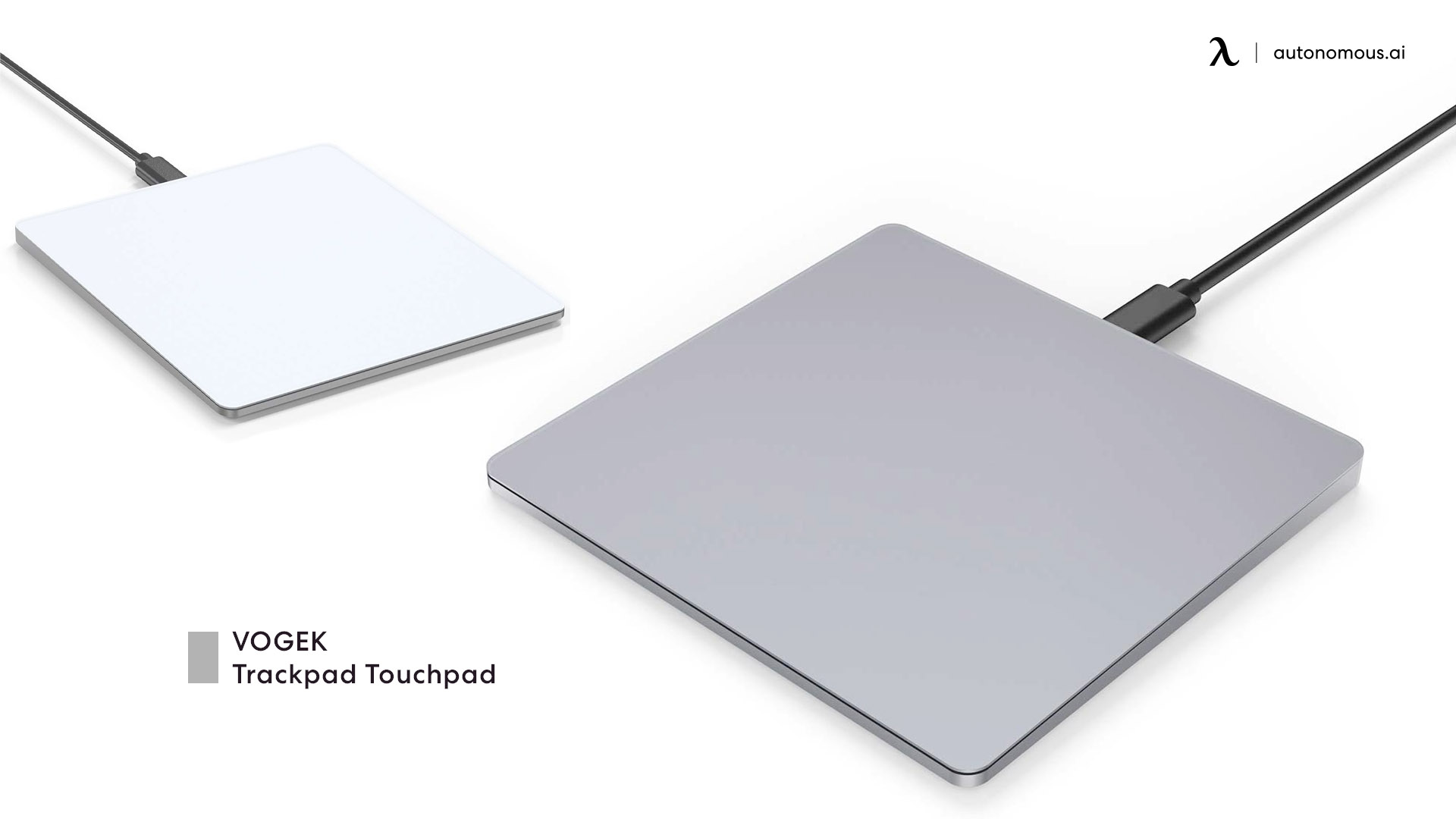

The VOGEK Trackpad Touchpad is a fantastic choice as it’s compatible with most desktops.
5 Thumb Exercises to Relieve Thumb Pain
1. Make a Fist
Hand and finger exercises can help with thumb pain. Stretch your fingers until you feel tightness. Start with a simple hand stretch:
- Make a gentle fist by wrapping your thumb across your fingers.
- Hold this position for 60 seconds and release. Spread your fingers out.
- Repeat at least five times.
2. Claw Stretches
These stretches improve the range of motion in your fingers.
- Hold out your hands in front of you with your palms facing you.
- Bend your fingertips down so that they touch the base of each finger.
- Hold this position for 40 to 60 seconds and release.
- Repeat at least five times with both hands.
3. Thumb extension Stretches
With your palm facing upwards, stretch your thumb horizontally as far as possible. Hold for five seconds, then return your thumb in line with other fingers. Repeat five times on each thumb.
4. Thumb Abduction/Adduction Stretches
With your palms facing down, extend your thumbs out horizontally, away from other fingers. Then bend your thumbs downwards until they point directly at the floor. Hold this position for five seconds. Then release and return your thumbs in line with other fingers. You can repeat this thumb pain solution at least five times.
5. Thumb Flexion Stretches
With your palms facing upwards, bend the joints of your thumbs as far as possible. Then move your thumbs across your palms. Hold for 5 seconds before returning your thumbs to the original position. Repeat this exercise at least five times.
A variation of this exercise helps keep your thumb joints straight as you flex your thumb towards your palm. Try to reach the base of your pinky fingers.
Other Solutions that can Ease Thumb Pain
Apart from embracing ergonomic mice and doing thumb exercises, there are other considerations to observe if you suffer from thumb pain.
1. Take Regular Breaks
Taking micro-breaks frequently can help ease thumb pain. SpineUniverse suggests taking regular micro-breaks, where you stop typing and scrolling for 60 seconds every time. During this break, rest your hands, stretch, stand up and move around to stretch your muscles.
2. Change Your Diet
Maybe what’s causing your thumb pain is osteoarthritis. In this case, making dietary changes could be the solution. According to the World Health Organization (WHO), osteoarthritis is one of the most disabling diseases in developed countries.
However, a study from the University of Surrey in the United Kingdom suggests that consuming a gram of fish oil every day can help in reducing pain and inflammation in the joints. Fish oil contains two omega-3 fatty acids: eicosatetraenoic acid and docosahexaenoic acid. These fatty acids help in reducing inflammation in joints, easing joint pain.
The researchers also found that eating food rich in Vitamin K, such as spinach and kale, could help in treating and preventing osteoarthritis.
Conclusion
Thumb pain is debilitating; however, as you can see, there are many ways to fix it. By switching to ergonomic mouse and keyboards, doing thumb stretches, taking frequent breaks, and reconsidering your diet, you can reduce or even eliminate thumb pain. And remember to use smart office products such as a standing desk or an ergonomic office chair to avoid ergonomic injuries at your workplace.
Stay connected with us!
Subscribe to our weekly updates to stay in the loop about our latest innovations and community news!
Interested in a Link Placement?
Spread the word
.svg)
.svg)





/https://storage.googleapis.com/s3-autonomous-upgrade-3/production/ecm/230914/bulk-order-sep-2023-720x1200-CTA-min.jpg)

/https://storage.googleapis.com/s3-autonomous-upgrade-3/production/ecm/230824/Amanda-8035f52a-7230-4c31-9bda-626fd7c392bf.jpg)